What stops iOS devs from joining alternative marketplaces? Fact-checking top concerns
Since Apple enabled app distribution through alternative marketplaces in the EU, the mobile ecosystem has been shaped. 60% of developers are enthusiastic about exploring distribution channels outside the App Store. They believe it’s an opportunity to grow their user base, generate additional revenue, reduce client acquisition costs, and react to increased competition.
We asked over 50 iOS developers what they think about alternative marketplaces. While some are all in favor and have already joined, others shared their concerns. We were surprised by how many biases that don't match reality limit developers from finding new possibilities for their apps.
Let's take a deeper look at these issues, exposing the truths, challenges, and opportunities of iOS apps distribution via alternative stores.
You shouldn’t say goodbye to the App Store
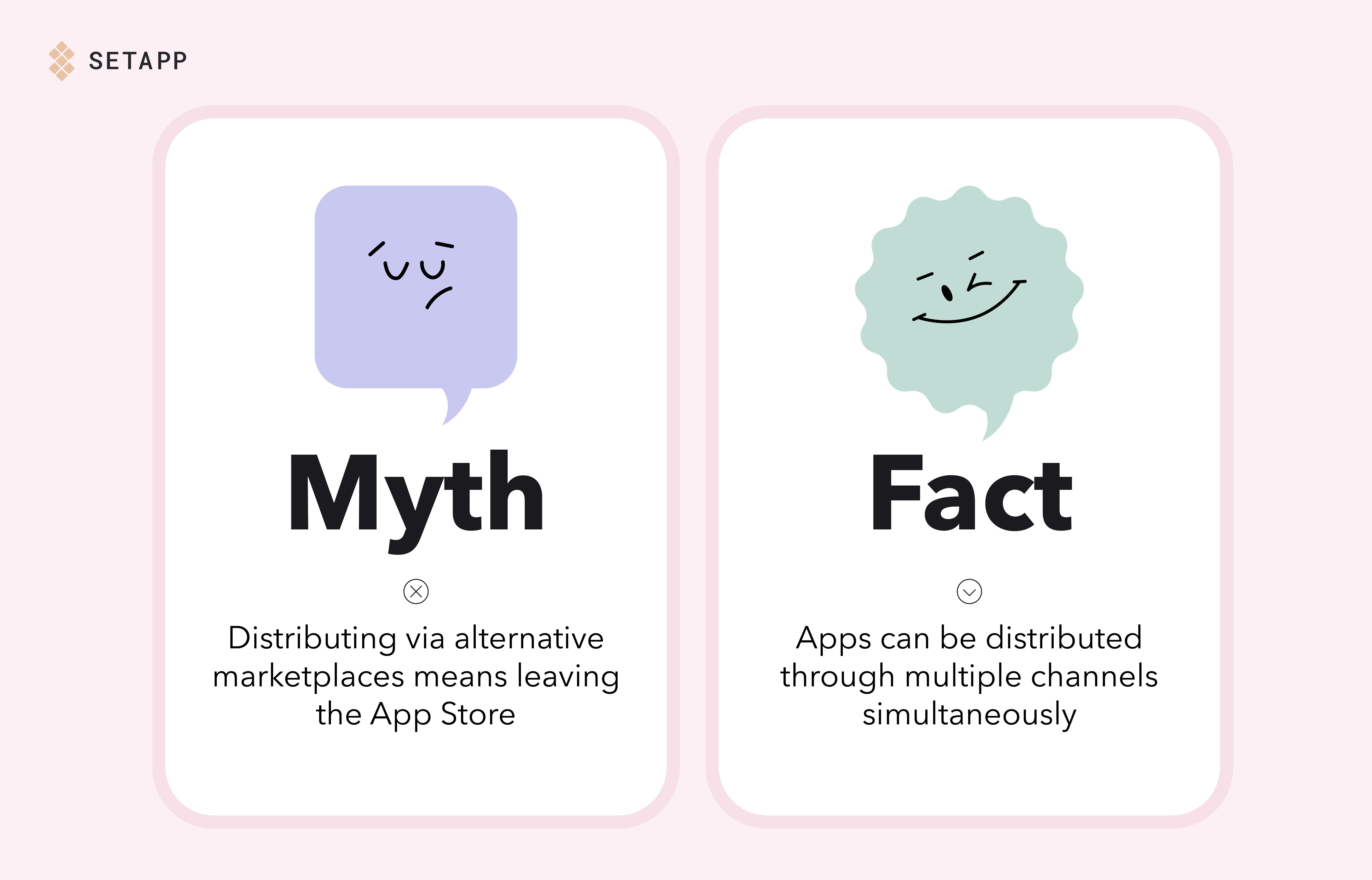
Some developers don't use the option to distribute through iOS alternative app stores in the EU because they believe that this way, their app will no longer be available on the App Store. This is not the case. With new regulations in the EU, developers can simultaneously distribute iOS/iPadOS apps through an alternative marketplace ( or even more than one), the App Store, and a website.
App distribution through multiple channels provides access to a larger user base of different platforms, reduces dependence on a single revenue stream, and enables you to test the features of different channels.
To join an alternative marketplace:
- Accept Apple's new terms in the EU. Log into App Store Connect and navigate to the Agreements section. Review and accept the Alternative EU Terms Addendum. Important: This step is irreversible — once accepted, you can't revert to old terms.
- Link an alternative marketplace. Research different marketplaces to identify the most suitable platform for your app. Consider factors such as target audience, fees, and technical requirements. After selecting a marketplace, add it to your App Store Connect Account using a token provided by the chosen alternative marketplace.
- Pass notarization or standard App review Ensure your app meets Apple's notarization requirements and submit it for security check. Notarization process takes around 24 hours and is required for every new app version.
- Get Alternative Distribution Package ID. This ID is automatically generated for each version of your app. It can be found in the “History” tab on the app’s page in your App Store Connect account. You can share this ID with the new store manually or set up alerts in App Store Connect to do it automatically.
- Be prepared to pass the review on the chosen alternative marketplace. Each marketplace might have its own review process for quality and security. Prepare for potential additional requirements specific to your chosen marketplace.
- Launch on chosen marketplace(s). Once approved, your app will be available on the alternative marketplace.
More information about each step you can find in our ultimate guide on how to distribute your iOS/iPadOS app via alternative marketplaces in the EU.
EU audience isn’t too small to count on
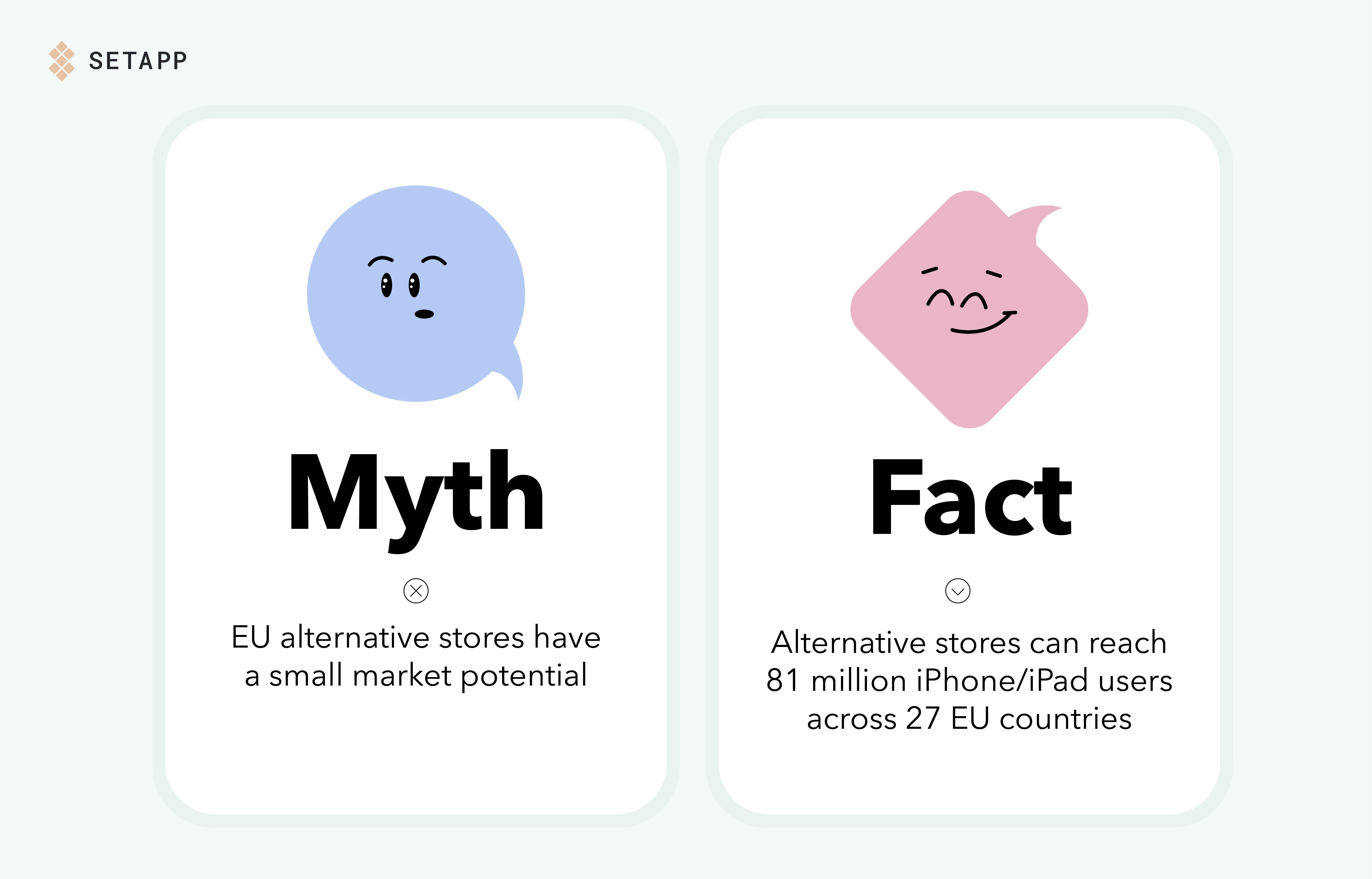
While some developers doubt the number of potential audiences they can reach with alternative app stores in the EU, others see the potential. After all, alternative stores mean the ability to launch in all 27 EU countries and reach an 81 mln audience of iPhone / iPad users!
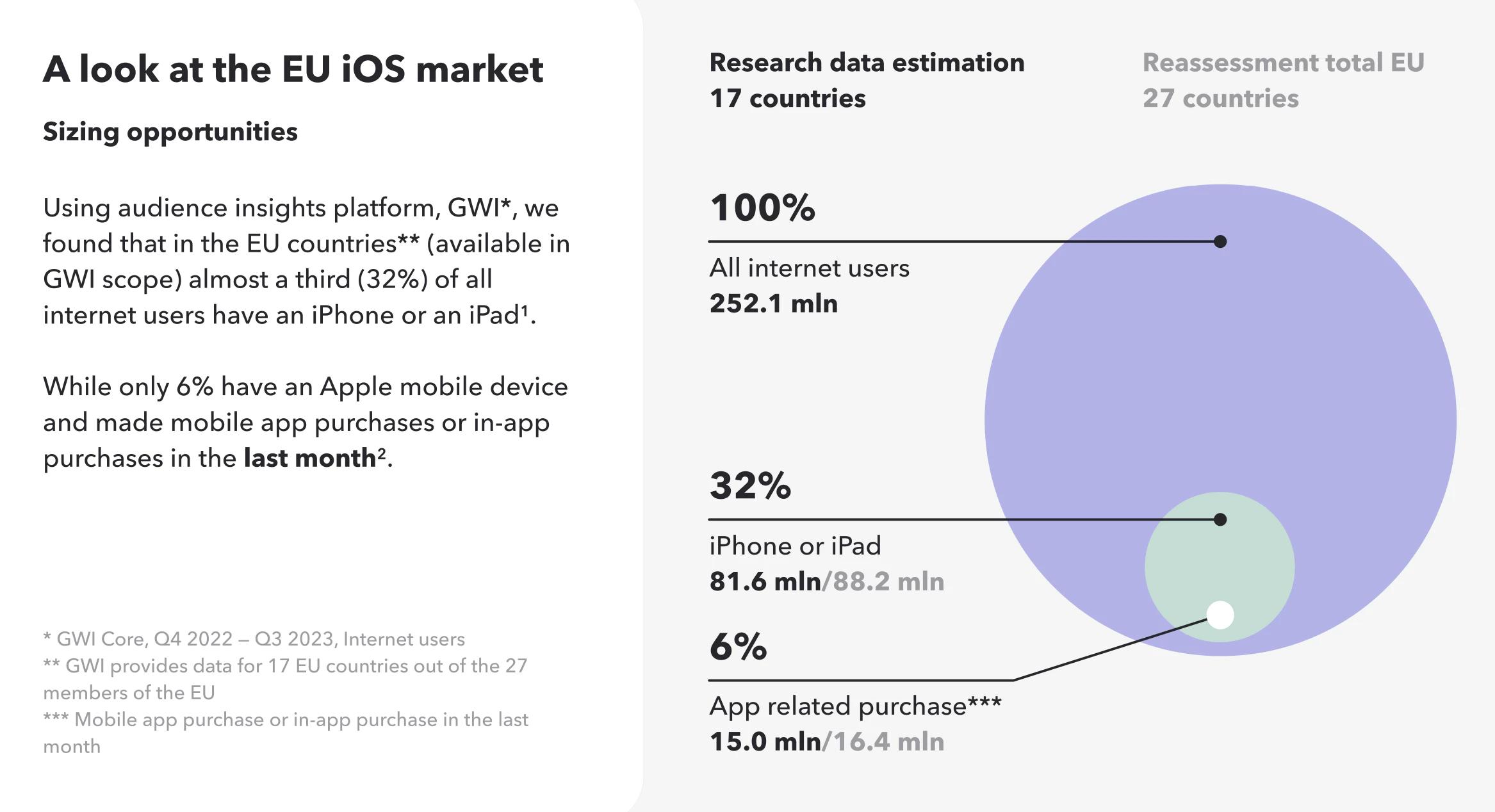
The main thing is that it will cost you much less than spending the budget on promotion in new markets. Setapp Mobile is an example of an alternative marketplace that you can join and focus solely on developing the application's features or localizing the app interface while it takes care of the rest of the distribution process.
This is especially relevant for developers outside the EU who find it difficult and expensive to get into the specifics of the local market but want to attract a local audience. Joining third-party app stores in the EU may become a cost-effective entry point that provides access to a diverse international user base. Currently, Setapp Mobile has more than 50 hand-picked apps from not only EU developers but also from US, UK, Australia, and Asia, who benefit from the possibility of attracting an EU audience.
No need to handle all the financial headaches
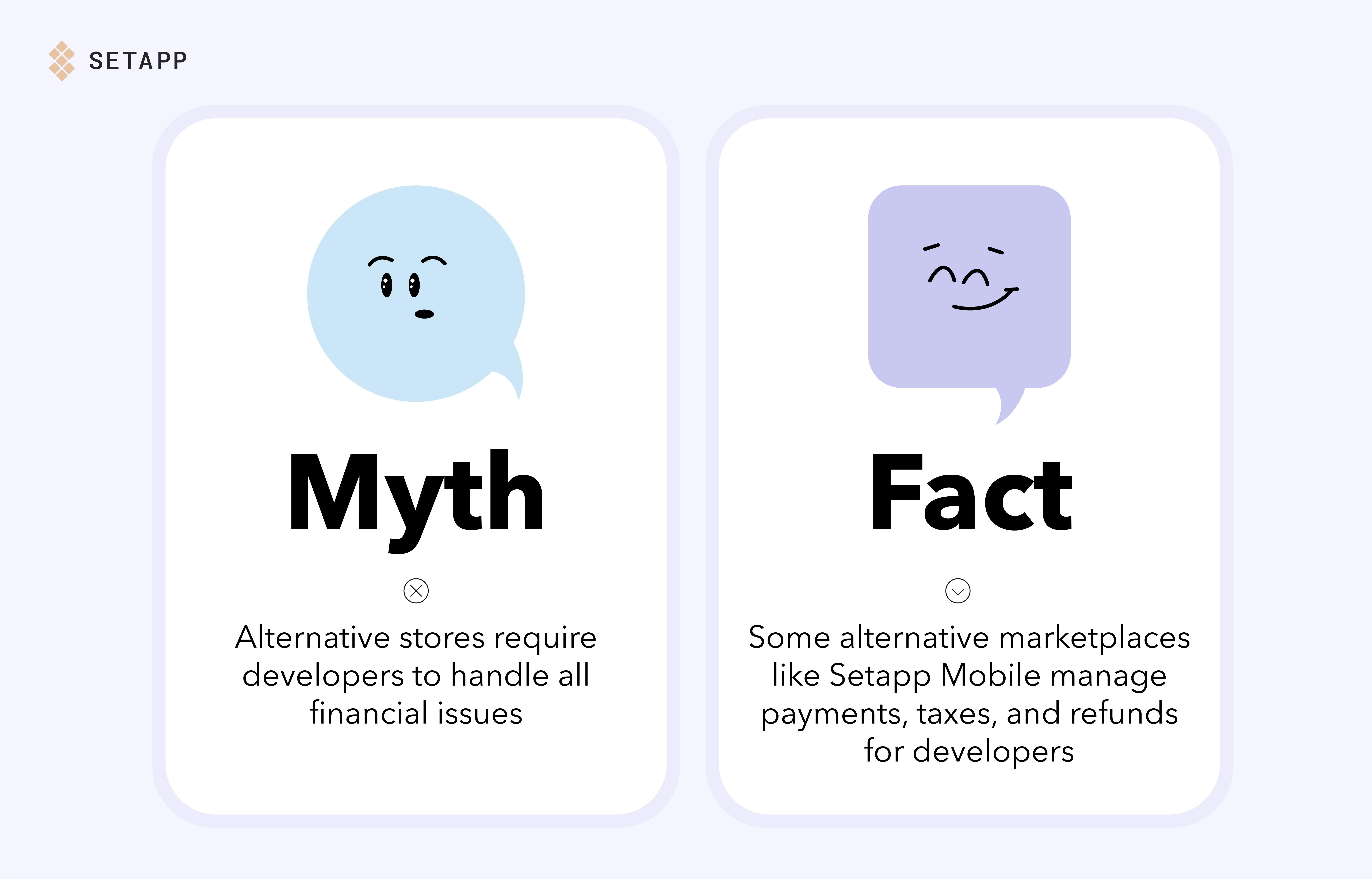
Having grown accustomed to Apple handling all payments, taxes, and refunds, some developers believe that by joining alternative iOS stores, they will need to handle all issues themselves.
However, in the case of Setapp Mobile, this concern does not match reality. Developers don't have to manage their financial transactions alone. All that's required from devs is banking information to transfer earnings to their account. Marketplace takes care of the rest. It handles all the responsibilities of making payments, handling tax calculations, and managing refunds. Especially since in Setapp Mobile, users don't pay for individual apps but subscribe to the marketplace itself. Thus, there is no concept of refund for a specific app.
Competition isn’t necessarily a bad thing
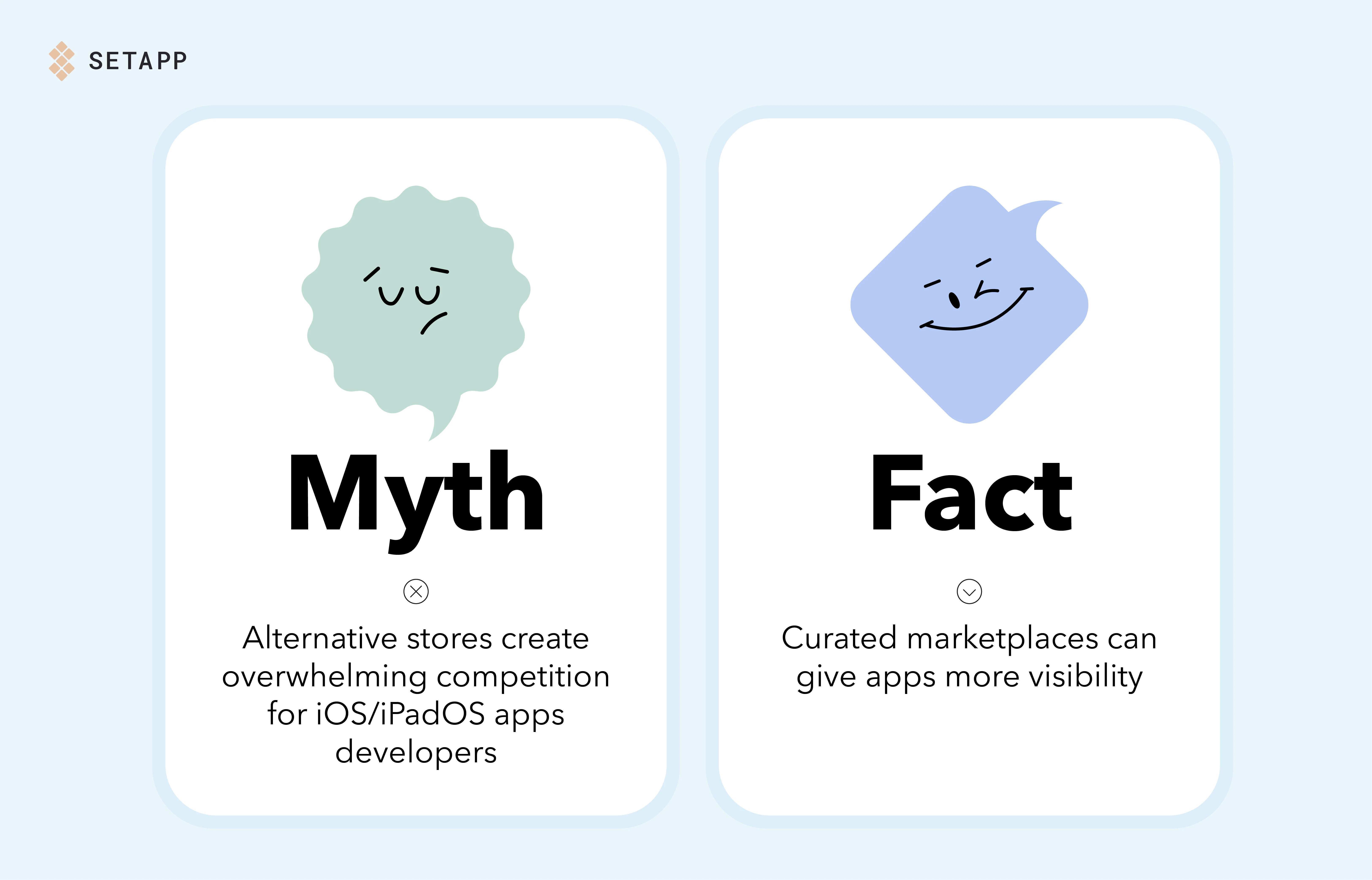
Competition is another factor that makes developers hesitate to join third-party app stores. However, let's be honest: the iOS/iPadOS ecosystem is already intensely competitive! With over 2 million apps in the App Store, standing out is a significant challenge for most developers. Therefore, some developers can benefit even more from an alternative marketplace.
In Setapp Mobile, we select only high-quality applications, creating a much less crowded environment. To join Setapp Mobile, developers must follow specific requirements, among which are:
- App functionality must be appropriately tested ("demo"', "trial," or "test" versions are not allowed).
- No undocumented or hidden features.
- No advertising or promotional functionality.
- In-app purchases are not allowed.
- User interface must follow industry-standard practices and avoid confusing techniques.
- App must demonstrate high quality and attention to detail in all aspects.
We include multiple apps with similar functionality, but only because it creates healthy competition and allows users to choose. In this way, users benefit from more choices and curated apps, while developers get a larger slice of users' attention.
Effective marketing promotion is possible outside the App Store
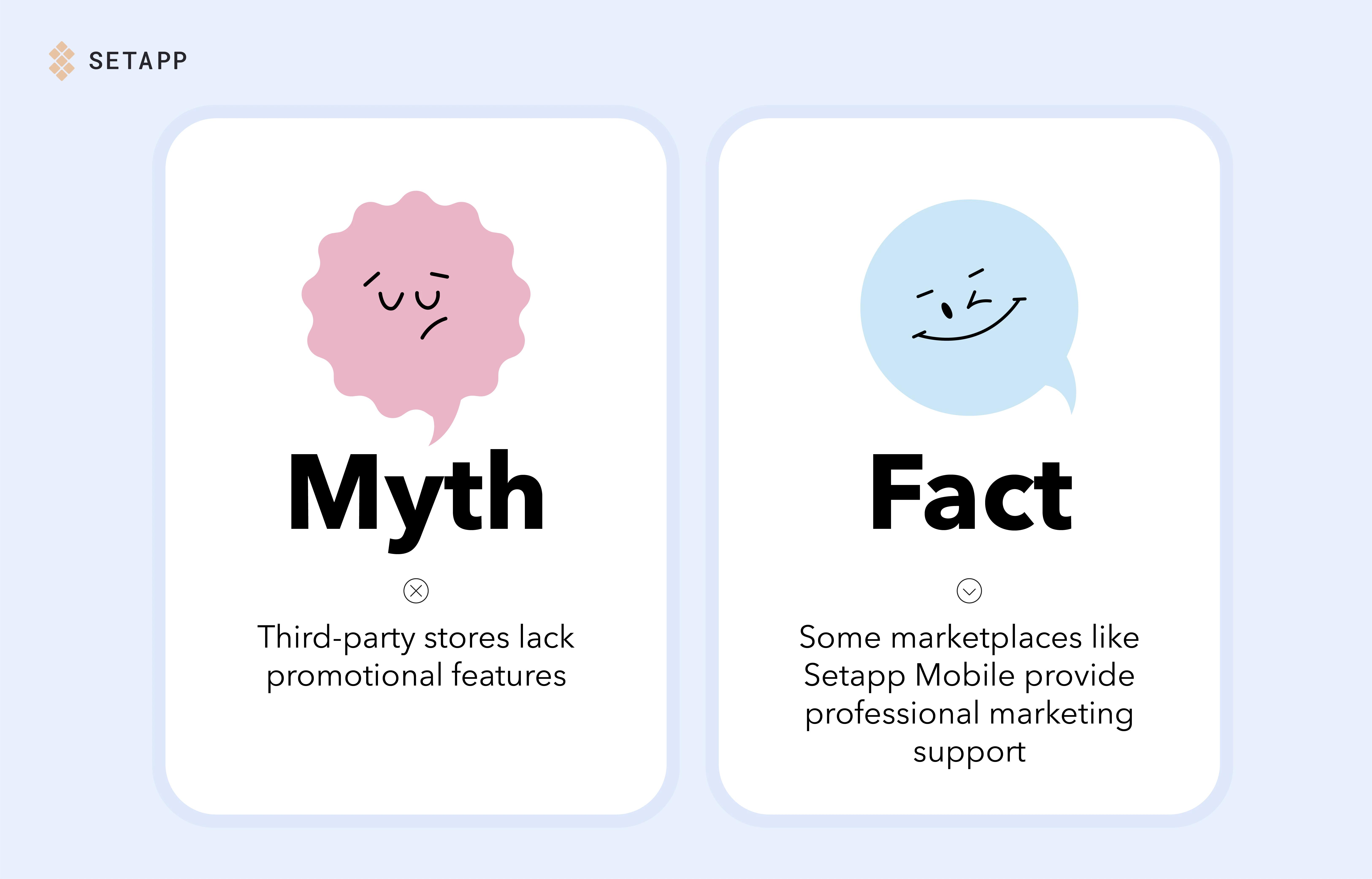
Developers are used to the promotional features of the App Store and doubt that 3rd party iOS app stores can help them provide the same marketing opportunities.
It depends on the specific marketplace. As for Setapp, our marketing team is working on developer app promos, so they don’t have to handle it themselves.
All app descriptions are written by our professional copywriters, so you can be sure that all your app’s features and benefits are communicated effectively to potential users. Descriptions are explicitly tailored for Setapp’s audience, which can lead to increasing engagement and downloads. But the critical point is that Setapp doesn't aim to collect millions of apps. We carefully select each app for the platform, ensuring users pay attention to it.
Final thoughts
Since alternative iOS/iPadOS marketplaces are a new reality in the EU market, they may raise many questions for developers. However, looking deeper, this is an excellent opportunity to increase the audience and get an additional profit channel. By debunking the myths and exploring the features of a particular marketplace, you can take advantage of this additional distribution channel!
FAQ
Does Apple allow alternative app stores?
Yes, Apple does allow alternative app stores for iOS/iPadOS, but only in the EU. These marketplaces have to pass Apple's approval process, and by downloading them, users must give explicit permission to download the apps to their device.
Can I distribute apps both via App Store and alternative marketplaces?
Developers in the EU can benefit from multiple channels to distribute their iOS/iPadOS apps: App Store, alternative marketplaces and a website. You don’t have to choose only one platform – Apple allows you to do it simultaneously.
Are 3rd party app stores safe?
To create a marketplace, a developer must pass authorization through the Alternative App Marketplace Entitlement (EU) and meet specific criteria, including security. An important requirement is that developers agree to engage in ongoing monitoring and detection of fraudulent, malicious, or illegal apps, activity in apps, and developers on alternative app marketplaces. In addition, all apps that are distributed through the third-party app store are notarized by Apple.





